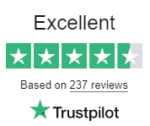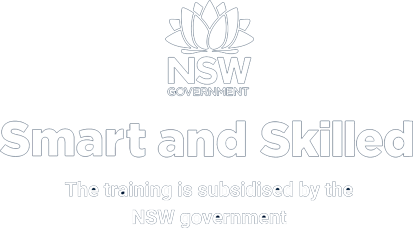Administrative controls play a crucial role in risk management and promoting a culture of safety in the workplace. By implementing policies, procedures, and training programs, you establish a solid foundation for a secure and efficient work environment.
Examples of administrative controls include safety policies, standard operating procedures, and comprehensive training programs that emphasise risk assessment and hazard identification. By prioritising administrative controls, you can effectively mitigate risks and ensure compliance with safety regulations, fostering a culture of safety and accountability in the construction industry.
Understanding the Concept of the Hierarchy of Control
Defining the Hierarchy of Control and Its Significance
When it comes to ensuring safety in the construction industry, the concept of the Hierarchy of Control plays a vital role. This framework provides a structured approach to managing and minimising risks, helping professionals like you create safer work environments. The hierarchy of control is a systematic process that identifies and prioritises control measures based on their effectiveness in reducing hazards.
By understanding this concept, you can take proactive steps to safeguard yourself and others on the construction site whether you have a CPC50320 Diploma of Building and Construction (Management) or a builder’s licence.
Exploring the Five Levels of the Hierarchy of Control
The hierarchy of control consists of five levels, each building upon the previous one to create a comprehensive safety strategy. At the top of the hierarchy is the elimination of hazards, where the goal is to remove the risk altogether. If elimination is not possible, the next level is substitution, where hazardous processes or materials are replaced with safer alternatives.
Engineering controls come next, focusing on modifying equipment or the work environment to minimise exposure to hazards. Administrative controls involve implementing policies, procedures, and training to mitigate risks. Finally, personal protective equipment (PPE) serves as the last line of defence when all other control measures are insufficient.
Benefits and Advantages of Implementing the Hierarchy of Control
Implementing the hierarchy of control brings numerous benefits to the construction industry including those who obtained a CPC50220 Diploma of Building and Construction (Building). By prioritising the most effective control measures, you can significantly reduce the likelihood of accidents and injuries. This approach not only safeguards lives but also enhances productivity by minimising disruptions caused by incidents.
Moreover, incorporating the hierarchy of control into your work practices demonstrates your commitment to safety, boosting your professional reputation and potentially opening doors to career advancement opportunities. Embracing this systematic approach empowers you to make informed decisions, identify potential hazards, and proactively mitigate risks, fostering a culture of safety within the construction industry.
💡KEY TAKEAWAY: Understanding the hierarchy of control is crucial for construction professionals seeking to create safer work environments. By comprehending the five levels of the hierarchy and their significance, you can proactively prioritise control measures and minimise risks, ensuring the well-being of yourself and others on the construction site.
Hazard Elimination and Safer Alternatives
The Power of Elimination: Removing Hazards at the Source
When it comes to ensuring safety in the construction industry, one of the most powerful strategies is hazard elimination. As an aspiring professional in this field, you must recognise the significance of addressing hazards at their source. By identifying and eliminating potential risks, you can create a work environment that is inherently safer for everyone involved.
Elimination involves a systematic approach to identifying hazards and taking decisive action to remove them entirely. It requires a keen eye for detail and a commitment to thoroughness. By carefully examining each construction process step or assessing the substances being used, you can identify hazards and devise effective strategies to eliminate them.
Substitution: Finding Safer Alternatives to Hazardous Processes or Substances
Another essential aspect of promoting safety in construction is the practice of substitution. This strategy involves finding safer alternatives to hazardous processes or substances, reducing the risk of accidents or exposure to harmful elements. By embracing the principle of substitution, you actively seek out ways to replace dangerous practices with safer ones, minimising the potential for harm.
When considering substitution, it is vital to evaluate the entire construction process and the materials being used. Look for alternatives that offer comparable performance while posing fewer risks to workers and the environment. This could involve replacing toxic substances with non-toxic ones or adopting construction techniques that reduce the likelihood of accidents.
Key Considerations for Effective Hazard Elimination and Substitution
To ensure effective hazard elimination and substitution, there are several key considerations to keep in mind. First and foremost, you must stay well-informed about industry best practices and safety regulations. This knowledge equips you with the necessary tools to identify hazards and make informed decisions regarding elimination or substitution.
Additionally, collaboration and communication play a vital role in this process. Engage with your colleagues and superiors, fostering a culture of open dialogue where safety concerns can be addressed. Lastly, a commitment to continuous learning and improvement is crucial. Stay updated on advancements in construction techniques, materials, and safety protocols.
💡KEY TAKEAWAY: In the pursuit of safety in the construction industry, hazard elimination and substitution are indispensable strategies. By removing hazards at their source and finding safer alternatives, you create a work environment that protects workers and promotes productivity.
Engineering Controls: Designing for Safety
Introduction to Engineering Controls and Their Purpose
When it comes to ensuring safety in the workplace environment, engineering controls play a pivotal role. These controls encompass a range of measures designed to minimise hazards and create a secure working environment for all individuals involved. The purpose of engineering controls is twofold: to eliminate or reduce potential risks at their source and to provide protective mechanisms that safeguard workers from harm.
Implementing Engineering Controls in the Workplace Environment
Implementing engineering controls requires a meticulous approach that considers the unique characteristics of the workplace and the specific hazards present. This involves a comprehensive assessment of the work environment, identification of potential risks, and the subsequent implementation of appropriate engineering control measures.
These measures can include physical modifications to machinery or equipment, the installation of barriers or guards, and the implementation of ventilation systems to control exposure to harmful substances.
Evaluating the Effectiveness of Engineering Controls
The effectiveness of engineering controls must be continuously evaluated to ensure their ongoing efficacy. Regular monitoring and assessment allow for necessary adjustments and improvements to be made, ensuring that workers remain protected. Evaluating the effectiveness of engineering controls involves analysing various factors, such as accident rates, exposure levels, and worker feedback.
This comprehensive approach ensures that any deficiencies or areas of improvement are promptly identified and addressed.
💡KEY TAKEAWAY: Designing for safety through the implementation of engineering controls is paramount in the construction industry. By understanding the purpose of engineering controls, implementing them appropriately, and evaluating their effectiveness, individuals can actively contribute to fostering a culture of safety within the construction industry.
Administrative Controls: Policies and Procedures
Understanding the Role of Administrative Controls in Risk Management
Administrative controls involve the implementation of rules and guidelines that govern the behaviour and actions of employees. They serve as a framework for decision-making, establishing clear expectations and responsibilities. Through comprehensive training programs and regular communication, you can effectively disseminate crucial information regarding safety protocols, emergency procedures, and risk mitigation strategies.
Examples of Administrative Controls in the Workplace
In the workplace, examples of administrative controls include the development and implementation of safety policies, standard operating procedures, and training programs. Safety policies outline the overarching principles and guidelines that govern safety practices within the organisation. They provide a framework for decision-making, emphasising the importance of risk assessment, hazard identification, and incident reporting.
Standard operating procedures (SOPs) serve as step-by-step instructions for performing tasks safely and efficiently. They provide employees with clear and concise guidance on how to handle equipment, chemicals, and potential hazards.
Meanwhile, training programs are a vital component of administrative controls, equipping employees with the knowledge and skills they need to mitigate risks. From general safety induction programs to specialised training on specific tasks or equipment, these programs empower individuals to identify potential hazards, follow proper procedures, and respond effectively in emergency situations.
Best Practices for Successful Implementation of Administrative Controls
To ensure the successful implementation of administrative controls, it is essential to adopt best practices that optimise their effectiveness:
Comprehensive Risk Assessment: Conduct a thorough risk assessment to identify potential hazards and prioritise control measures. This process should involve input from employees at all levels, as their insights and experiences can greatly contribute to the accuracy and relevance of the assessment.
Clear Communication: Establish effective communication channels to disseminate safety policies, procedures, and training materials. Ensure that information is readily accessible, easily understandable, and regularly updated. Encourage open dialogue and feedback, fostering a culture of continuous improvement.
Training and Education: Invest in comprehensive training programs that align with the specific needs of your workforce. Tailor the training to different roles and levels of responsibility, providing employees with the knowledge and skills required to effectively implement administrative controls.
💡KEY TAKEAWAY: In the realm of risk management, administrative controls serve as the backbone of a safe and efficient workplace. Through the development and implementation of policies, procedures, and training programs, these controls establish a framework for decision-making, promote accountability, and minimise the risk of accidents and hazards.
Personal Protective Equipment (PPE) and Its Application
The Significance of Personal Protective Equipment in Minimising Risk
When it comes to construction, safety should always be paramount. Personal Protective Equipment (PPE) plays a vital role in minimising risks and ensuring the well-being of workers like yourself. Its significance cannot be overstated, as it serves as a crucial line of defence against potential hazards on the construction site.
From head to toe, each piece of equipment serves a specific purpose in mitigating risks. Hard hats shield your head from falling objects, safety goggles safeguard your eyes against debris, and earplugs protect your hearing from excessive noise. Reflective vests enhance visibility, while sturdy boots shield your feet from potential injury. Gloves shield your hands from sharp edges or harmful substances, and respiratory masks filter out harmful particles.
Types of Personal Protective Equipment and Their Specific Applications
Understanding the different types of PPE and their specific applications is essential for ensuring your safety on the construction site. Each piece of equipment is designed to address a particular hazard you may encounter in your daily tasks.
- Head protection: Hard hats are essential for protecting your head from falling objects or potential head injuries.
- Eye and face protection: Safety goggles shield your eyes from flying debris, chemicals, or any other hazards that could cause eye damage.
- Hearing protection: Earplugs or earmuffs provide a barrier against loud noises, preventing long-term hearing damage.
- Visibility gear: Reflective vests or clothing with high-visibility properties enhance your visibility, ensuring that you are easily seen by others on the site.
- Foot protection: Sturdy, steel-toed boots safeguard your feet from heavy objects, sharp materials, or potential electrical hazards.
- Hand protection: Gloves come in various forms, such as cut-resistant gloves, chemical-resistant gloves, or heat-resistant gloves, depending on the specific task at hand.
- Respiratory protection: Respiratory masks, including N95 masks or respirators, filter out harmful particles or chemicals present in the air.
Selecting, Using, and Maintaining PPE Effectively
To maximise the effectiveness of PPE, it is crucial to select, use, and maintain your equipment properly. Choosing the right PPE involves considering the specific hazards you may encounter on the construction site and ensuring that the equipment meets the required safety standards.
Once you have the appropriate PPE, it is essential to use it consistently and correctly. Wear your PPE at all times when exposed to potential hazards, and ensure that it fits well and is properly adjusted for optimal protection. Follow the manufacturer’s instructions for proper usage, including any specific guidelines for cleaning or disinfecting.
Maintaining your PPE is vital to ensure its ongoing effectiveness. Regularly inspect your equipment for signs of wear and tear, damage, or degradation. Replace any damaged or worn-out PPE immediately. Store your equipment properly in clean and dry conditions to prevent deterioration.
💡KEY TAKEAWAY: Personal Protective Equipment (PPE) is an indispensable aspect of construction safety, serving as a crucial safeguard against potential hazards. Understanding the significance of PPE, the different types available, and how to select, use, and maintain them effectively is essential for ensuring your well-being on the construction site.
At Everthought, we are dedicated to unlocking your full potential in the construction industry. With our cutting-edge programs, industry-relevant skills, and unwavering commitment to your success, we serve as your catalyst for personal and professional growth.





